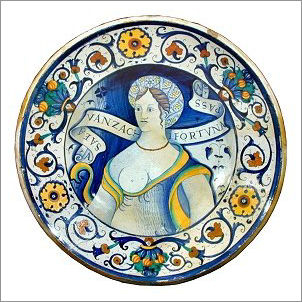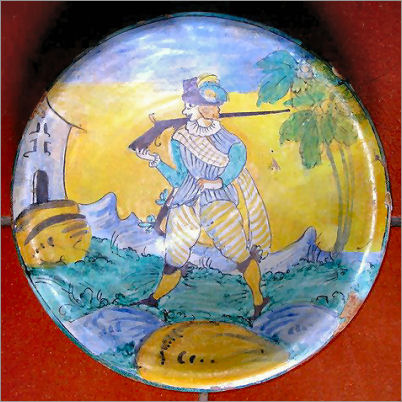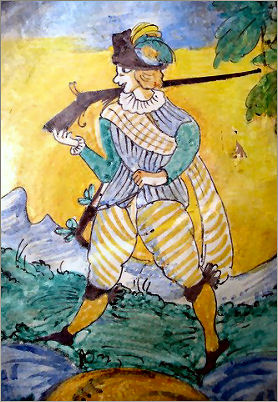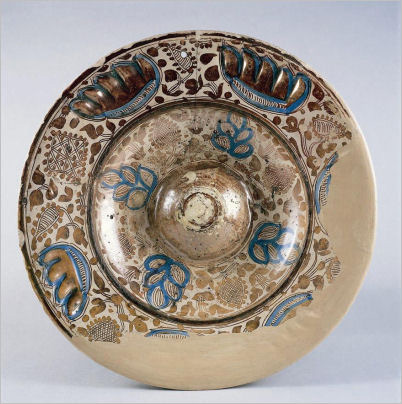No ceramic lover can resist the timeless charm of a Renaissance portrait finely painted on a Deruta ceramic.
 Scattered all over the world in the most prestigious museums, Deruta portrait ceramics share the same taste for proportions, the gentle forms, the harmonious colors, the fine heads and sweet gentle faces expressing utter serenity and selflessness.
Scattered all over the world in the most prestigious museums, Deruta portrait ceramics share the same taste for proportions, the gentle forms, the harmonious colors, the fine heads and sweet gentle faces expressing utter serenity and selflessness.
During the Renaissance portraits were one of the favorite subjects of Deruta potters, less keen on painting historical scenes (istoriato) which, on the contrary, were the pride of Gubbio, Casteldurante, Faenza and Urbino.
Before going through the reasons why Deruta pottery was so different from other Umbrian ceramics, it’s necessary to take a step back and focus on the revolutionary impact of the Renaissance on the contemporary lifestyle. Continue reading




